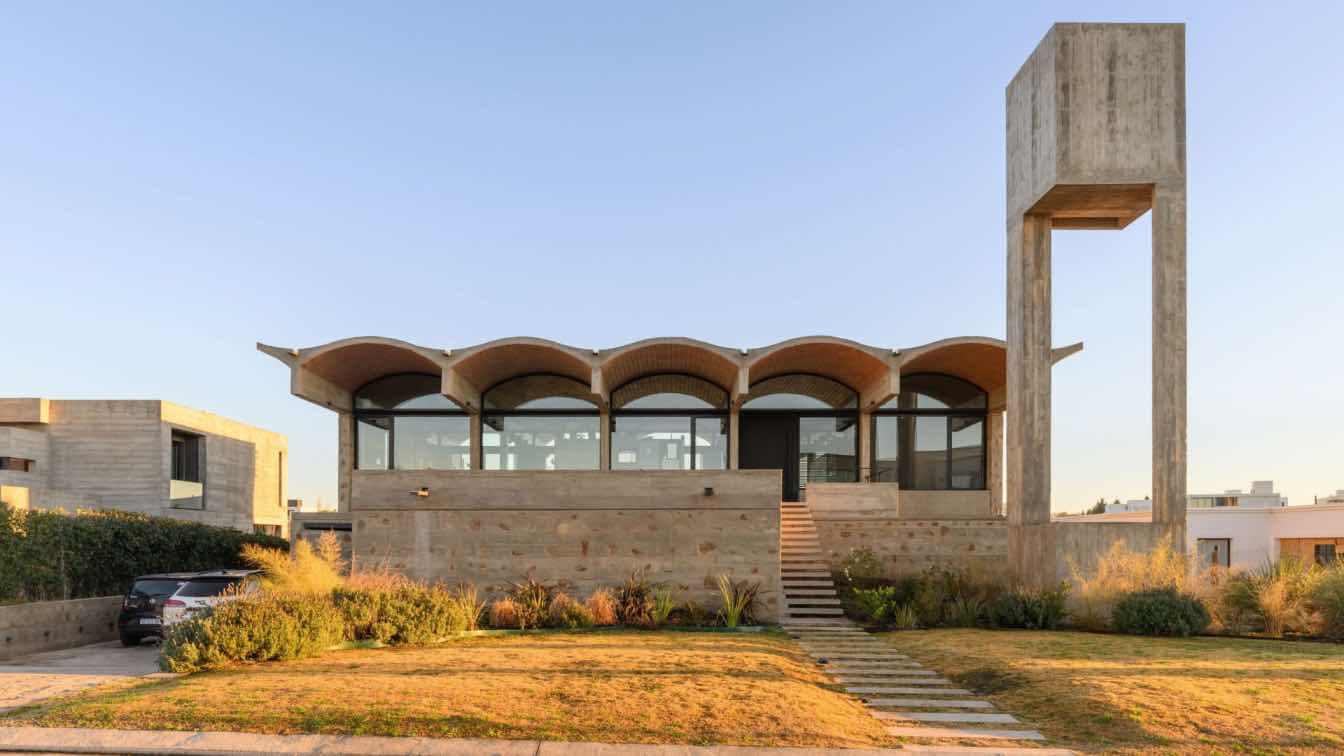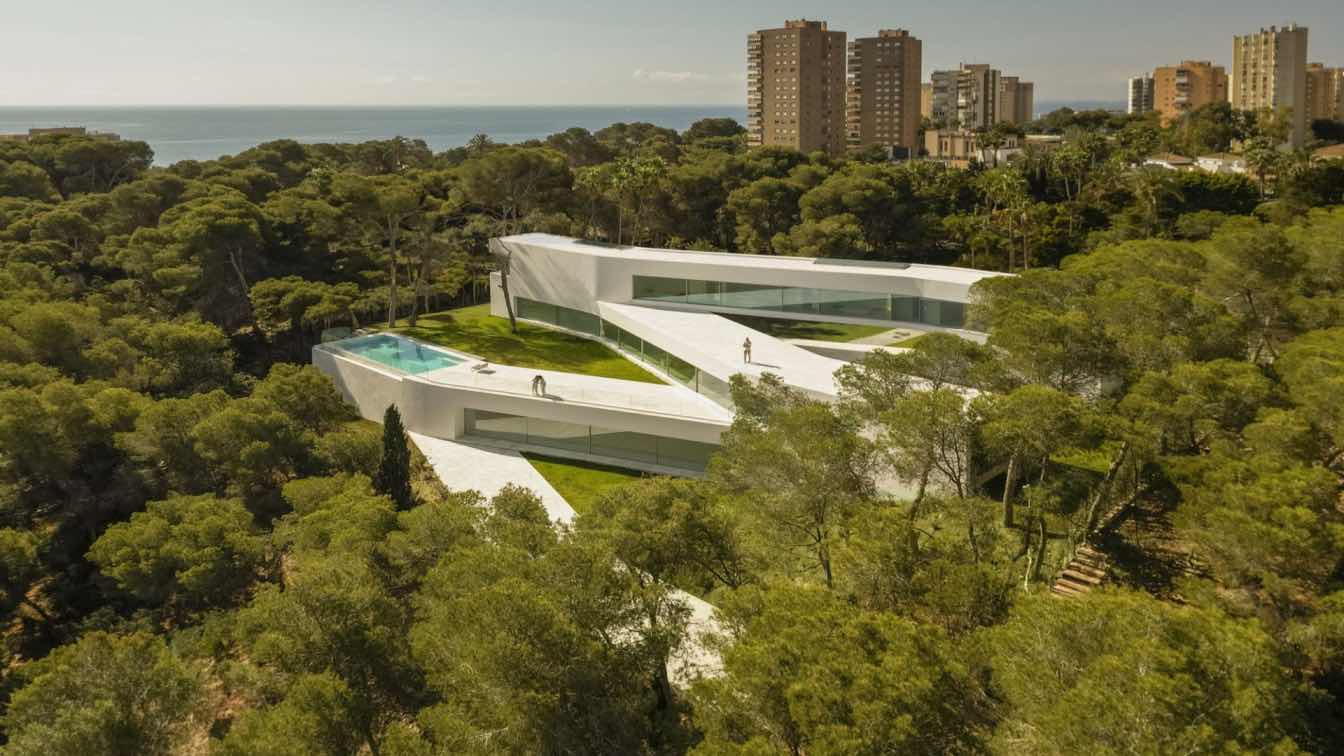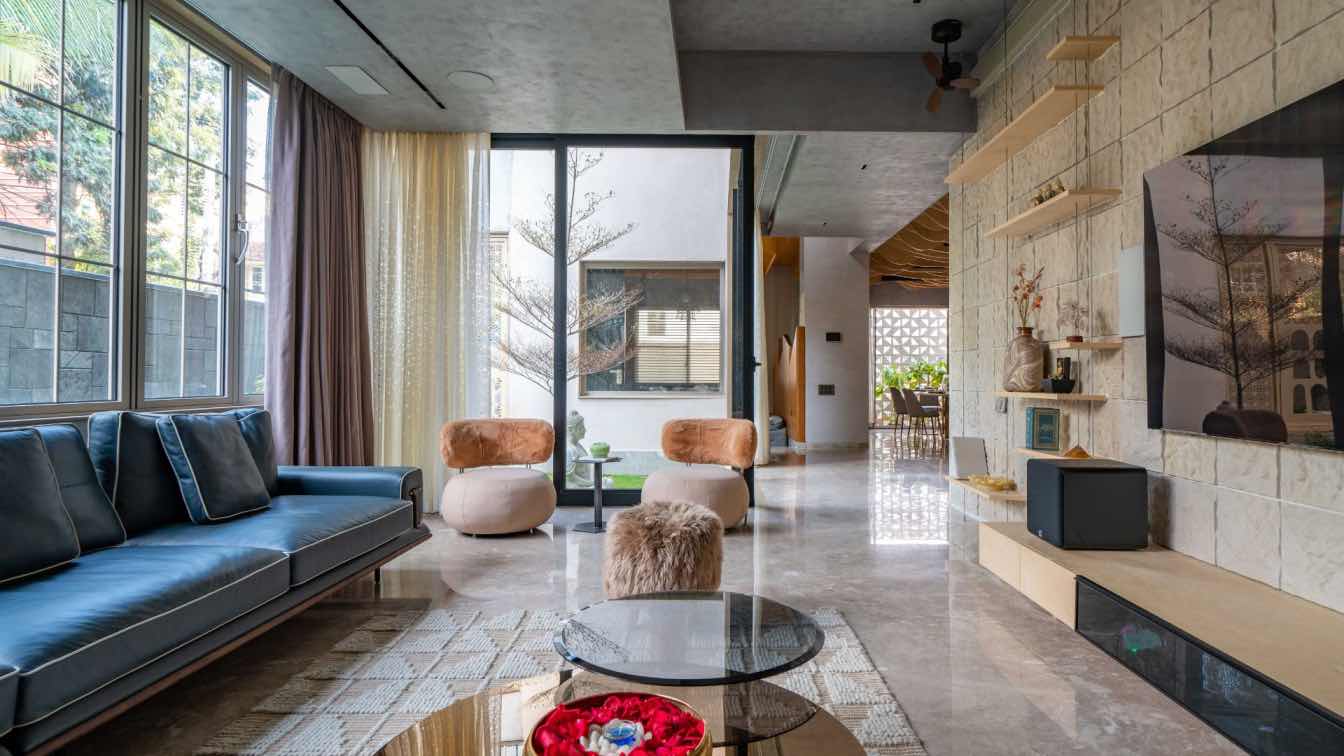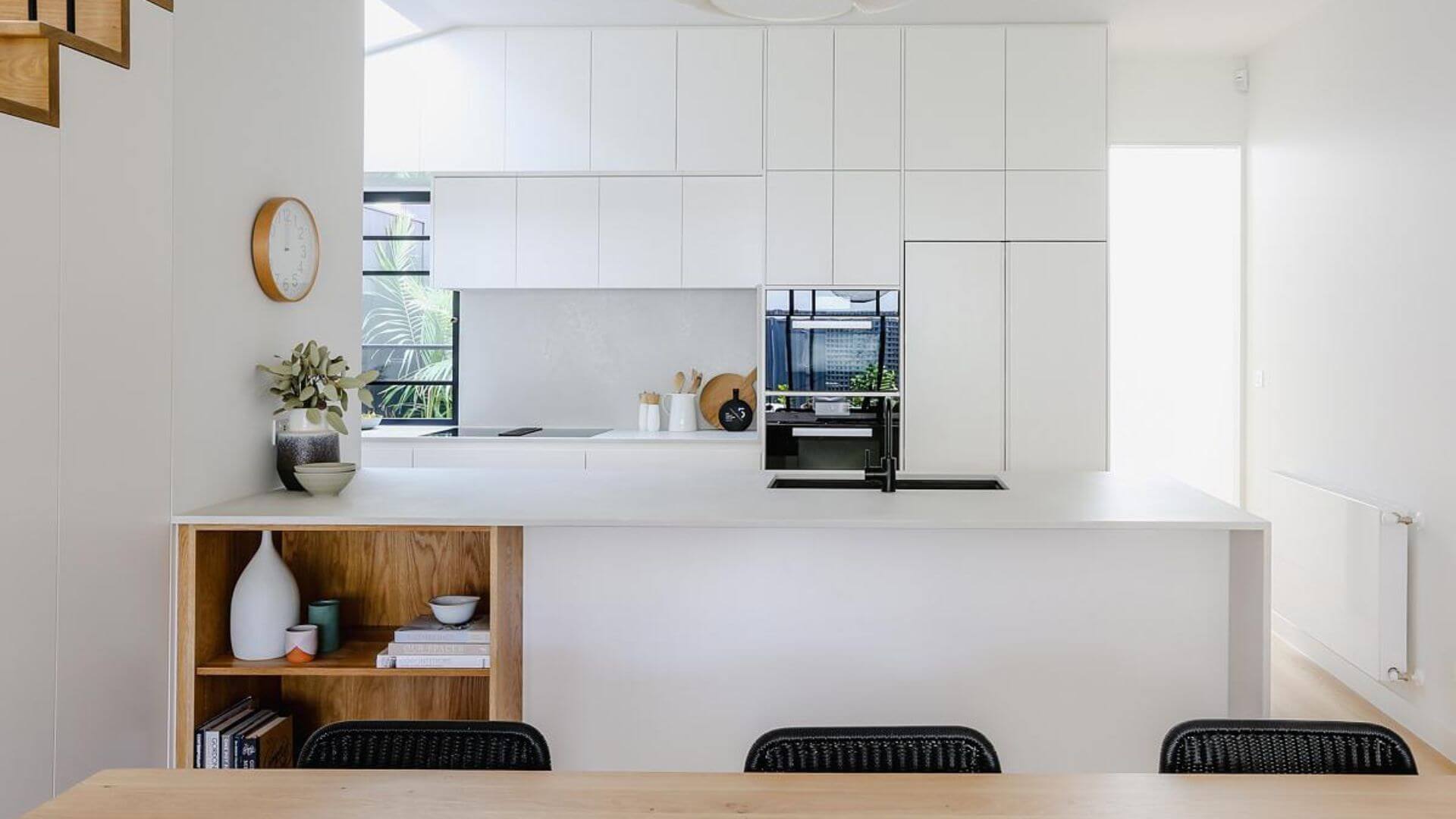Cristián Nanzer: Dome for an umbrarium
The house is located in a gated suburban neighborhood in the southwestern area of the city of Córdoba, near the source of the La Cañada stream. Once systematized, this stream becomes one of the city’s iconic promenades, flowing through various neighborhoods, reaching the city center, and ultimately emptying into the Suquía River.
The plot measures 25.45 meters by 59.00 meters, with a south-facing front and a gentle slope towards the rear boundary, which has a direct northern orientation and borders the neighborhood's golf course. This configuration influenced the project's typological decisions, placing the social area on the first floor to take advantage of distant views, while the bedrooms, daily living spaces, and service areas are arranged on the ground floor, oriented to the north.
The ground floor functions as a wall-like base for an independent structure that rises on the first floor, supporting a vaulted roof arranged in five parallel bands that organize all the spaces within the house. The spacing between the axes of the vaults is determined by maximizing the use of the plot's surface area while respecting the lateral setbacks stipulated by local regulations (with a band width of 3.45 meters and a total length of 15.50 meters). This system creates a "parasol"-type roof with continuous spatiality, defining intermediate areas at both the south and north facades.
The project is organized around five bands that define both the structural order and the programmatic distribution of the house, spanning both levels and establishing a construction module applicable to all systems involved. One of these bands establishes the longitudinal axis of access, connecting the approach spaces, the entrance, and the subsequent relationship with the exterior park.
Access is provided through a double-height space with distant views of the golf course, where the staircase is located, connecting the upper and lower floors and providing access to the park and pool area. This layout extends the interior typological organization to the geometry of the exterior spaces.

The project is based on two main operations: a wall-like podium that resolves connections, access points, and adapts to the terrain's slopes, and a vaulted roof that rises above the base, functioning as a shading element. This roof, supported by an independent structure, creates transitional intermediate spaces, characterized by its wide overhangs on the north and south facades.
The materiality of the house reflects its dual condition. On the ground floor, the exterior walls are made of cyclopean concrete, providing character and weight to the base. In contrast, the upper floor emphasizes transparency and distant views, highlighted by the vaulted roof suspended on an independent structure. Concrete walls are only present on the adjoining sides to ensure the privacy of the social area, shielding it from potential views from neighboring houses.
The design of the house, in its raw materiality, reveals its construction process and the craftsmanship involved. The predominant materials are stone and concrete, with exposed brick reserved exclusively for the vaults. This choice emphasizes, through both geometry and material, the diffusion of soft, warm light throughout the main space. The physical expression of the house extends even to the electrical installations, which, following the concept of an industrial building, are arranged visibly through galvanized piping. This provides greater versatility to the spaces and allows for future adaptations according to changing needs over time.
In order to keep the vaulted ceiling free of any installations, it was decided that the water tank would be an independent sculptural element that, without touching the main structure, would scale and identify the entrance to the house.
As a provisional conclusion, it can be defined as a house on the periphery of an overly sprawling city, with the constant hybridity and contrasts typical of our Latin American cities. It is conceived with archaic and universal architectural techniques, such as heavy walls and vaulted ceilings, and materialized with the skilled craftsmanship inherited from excellent regional builders, from the vast South American region. It is designed within the frameworks of a modern tradition learned over time. Despite (or rather, precisely because of) all of this, the house aims to respond—without rhetoric—to a contemporary architecture that is unique to its place and its time.





















































